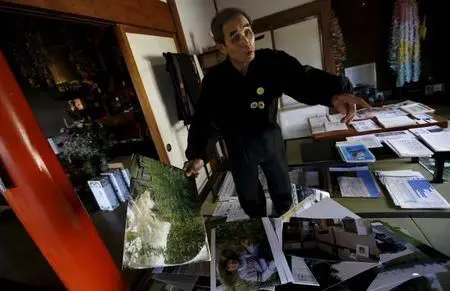In the town of Naraha, most of which lies within a 20-kilometer radius of Tokyo Electric Power Co.'s radiation-leaking nuclear power plant, only six percent of the residents have returned home.
But the Japanese government has been pushing for a new policy to speed up the return of displaced residents to some nuclear disaster-affected areas of Fukushima Prefecture, a move described by environmentalists as "very worrying."
The new policy is intended to cover up the truth of health risks in some areas in the prefecture, where the Fukushima Daiichi nuclear power plant was crippled by the monstrous quake-triggered tsunami in March 2011, said the Friend of the Earth Japan (FoE Japan).
The move actually means to abandon those "nuclear refugees" under the pretext of reconstruction, as the cause of the nuclear disaster has not been clarified and radioactive risks remain high there, said the Japanese branch of the FoE, which is an international nongovernmental organization.
Under a new policy, the Japanese government will lift the restrictions on residence in areas around the Fukushima Daiichi nuclear power plant by March 2017, which involves some 55,000 people.
To press these "nuclear refugees" to return, the authorities reportedly will stop extension of subsidies to them by March 2018, a move seen by many as relieving Tokyo of political pressure ahead of the 2020 Olympic Games.
According to Kyodo reports in late March, impacts of the nuclear disaster still lingered in some parts of Fukushima Prefecture after five years.
In the southeastern Fukushima town of Hirono, many shops and buildings remained empty. Majority of residents are still reluctant to go back to their homes, with only 48 percent of them having returned.
In Tomioka, some areas of which are still designated as part of the "difficult-to-return" zone, most retail buildings on both sides of the main road have been abandoned and are decaying. Bags containing contaminated soil were piled up near the shore.
In a residential area in the town of Okuma, roads damaged by the earthquake have been fixed, but destroyed houses remain unchanged. The only sounds that could be heard there are birds chirping and wind blowing.
There are also some "difficult-to-return" or "residence restriction" zones in the towns such as Okuma, Futaba and Minamisoma.
Some members of FoE Japan said that such a reconstruction made by the Japanese government was simply "not treating people like human beings."
(APD)
 简体中文
简体中文





